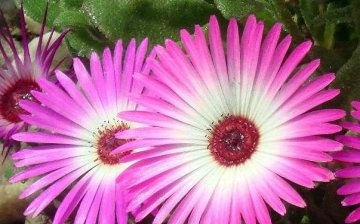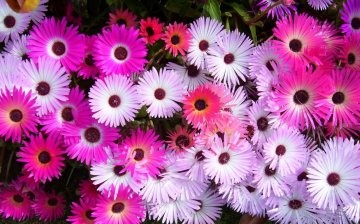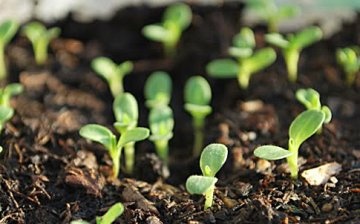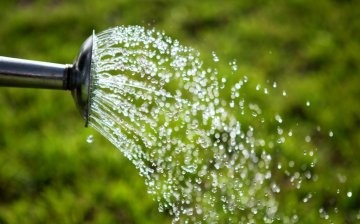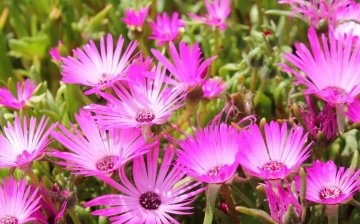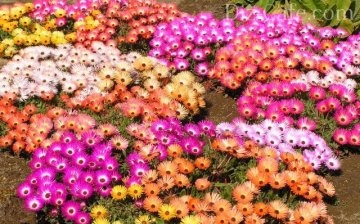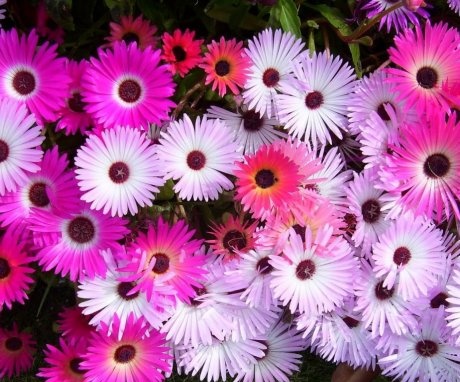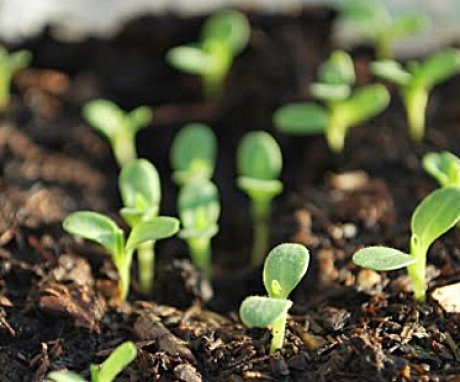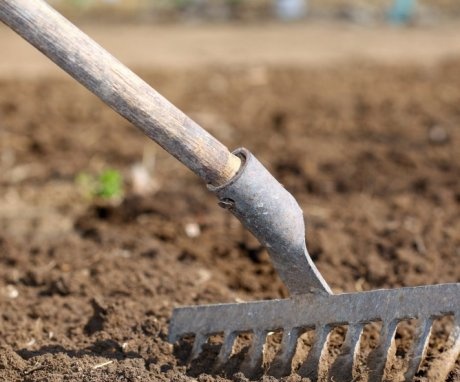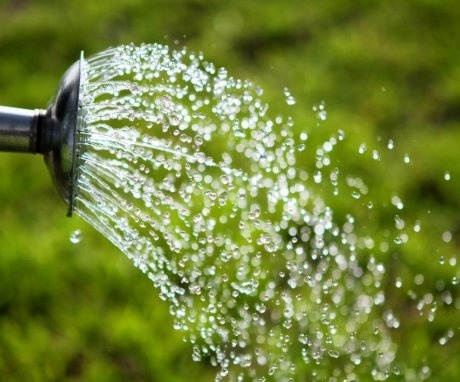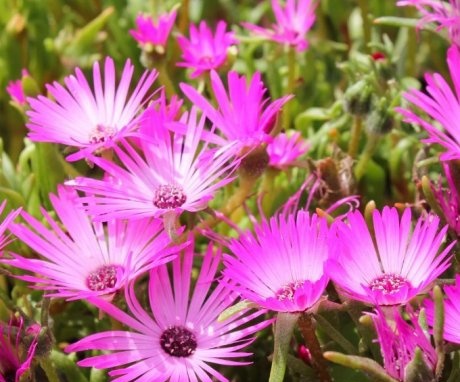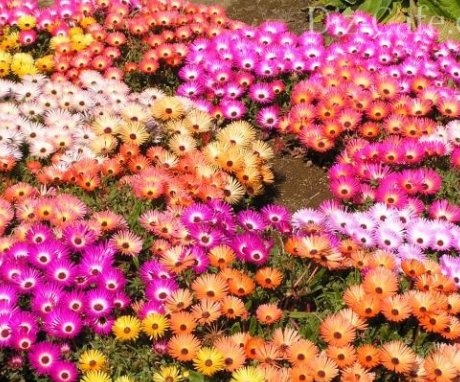Dorotheanthus in the garden: step by step cultivation from seed
The same well-known plant species are used to decorate flower beds, lawns, recreation areas. But every year gardeners are discovering new options for ornamental crops. One of them is dorotheanthus. The difficult name hides a plant original in its appearance, whose homeland is the south of the African continent. It can only be grown from seeds, having thoroughly studied the rules of planting and care.
Dorotheanthus was first described by the botanist Schwantes, who gave him such an original name in which the name Dorothea is hidden. The plant is unusual not only in flowers, but also in all terrestrial parts. And the exotic culture reproduces only by seeds.
Content:
- Description of the ornamental plant
- Soil and seed preparation
- Terms and rules for planting a flower
- Plant care tips
- Diseases and pests of dorotheanthus, how to deal with them
- Application in landscape design
Description of the ornamental plant
Dorotheanthus belongs to the ground cover species, as it has a large number of highly branching shoots no more than ten centimeters high. The stems are covered with fleshy oval leaves. Their peculiarity is the presence of papillae on them, which from afar look like dew drops or small fragments of glass. No wonder the dorotheanthus is called crystal grass.
The large flowers of the plant resemble in structure chamomile or aster... They are pleasing to the eye all summer long. Their colors are varied and bright. Unusual behavior is noted in the inflorescences. They wake up with the first rays of the sun and close at dusk. Therefore, the plant is popularly called the afternoon tea.
A decorative flower can be a decoration for a plot or a garden house.
It is grown by seeds, collecting them from fruit in the form of bolls in the fall. The popularity of an annual flower is growing from year to year, since, in addition to beauty, it is unpretentious in care.
Soil and seed preparation
To admire the flowers of dorotheanthus already in June, the seeds are planted in containers on the twentieth of March. Before planting the seeds in the ground, they are placed in a solution of potassium permanganate for ten to twenty minutes. To accelerate the growth of seedlings, you can treat the seed material for ten hours with growth stimulants of the Epin type.
The soil for dorotheanthus seedlings should be loose, with high permeability to air and moisture. The soil mixture is made from garden soil, peat or humus, adding a little river sand. You can purchase a special succulent soil from the store. Small seeds are laid out on the ground, slightly pressed into the ground. It is necessary to plant them at a distance of five centimeters from each other. Plants are not picked, as they do not tolerate it well. The first sprouts will appear after a week, in some varieties - three, even four weeks. They require an air temperature of fifteen degrees with a gradual decrease to ten. Water the seedlings with warm, settled water in moderation. Stagnant water is dangerous for the succulent.
Seedlings are planted in open ground, when the warm days of May come, the threat of morning frosts will pass.
Some growers, so as not to bother themselves, immediately plant seeds in open ground. To do this, choose sunny open areas with loose soil. For disinfection, the earth is spilled with boiling water and, after a few hours, the seeds are spread on the surface, far from each other. But in order for the seedlings to appear quickly, it is necessary to cover the plantings with polyethylene film. The preparation of seedlings is easy, it is understandable for novice florists.
Terms and rules for planting a flower
It is necessary to transplant seedlings to a permanent place in mid-May, when the soil and air are well warmed up.
- If seedlings of dorotheanthus grew in peat pots, then they are planted with them.
- The distance between plants should be at least twenty centimeters apart. The weather for planting is dry, warm.
- A layer of expanded clay is poured into the prepared holes, then they are half filled with a soil mixture.
- Having deepened a peat pot into the hole, cover it with the remaining earth and lightly tamp it.
- After planting, the plants are watered with warm water. With a sharp drop in air temperature, cover the flowers with non-woven material.
If the planting of the dorotheanthus is done correctly, then in the middle of June single large flowers will appear, and the foliage will sparkle in the sun.
Plant care tips
Proper care of a decorative flower is simple:
- Watering should be regular but not plentiful. Even if the flowers wilted on a hot afternoon, do not rush to water them. It is better to do this in the evening or in the morning.
- You need to feed the plant mineral fertilizers, mixtures for succulents. An excess of nutrients will affect the flowering of the dorotheanthus. The flowers will be pale and small, the amount of green mass will increase. The number of dressings during the growing season does not exceed twice a month, from spring to autumn.
- Dorotheanthus responds well to weeding and loosening of the soil.
It is not troublesome to look after the decorative culture. It grows by itself without special attention from the owner, delighting him with its beauty.
Diseases and pests of dorotheanthus, how to deal with them
One of the most common plant diseases associated with waterlogging of the soil and air:
- Powdery mildew recognized by the white bloom on the leaves. Pathogenic fungi are activated during the humid summer, when dew droplets remain on the leaves for a long time. Infusion of tobacco dust effectively fights disease. Two tablespoons are infused in a glass of hot water and sprayed with flowers.
- If the soil is too wet, the roots will rot. To prevent fungal infection, the frequency of watering is regulated, and the plants are sprayed with Fundazol. In case of severe damage, dorotheanthus can die, so diseased plants must be destroyed in time.
- Dry rot, spots on the green parts of the flower are associated with insufficient care. An African beauty needs a lot of light, warmth, weak soil acidity.
Through contaminated soil, water, seeds can penetrate into flower beds and pests:
- Miniature worms are able to quickly decorate plants with cotton-like cocoons. You can fight them mechanically by removing colonies of harmful insects with a cotton swab dipped in alcohol.
- Spider mites are rarely seen with the naked eye. But the product of his vital activity - sticky cobweb threads entangle the leaves of the flower, and small brownish spots are visible on the young growth. Parasites are spread by the wind from one flower to another. To combat the tick, use insecticides of the systemic action of Aktara or Confidor... It is recommended to process flowers and garlic infusion.
- The yellowing of the leaves of the annual may be associated with thrips. They pollute the beautiful flowers of the dorotheanthus with their excrement. The pest is dangerous as a carrier of fungal diseases. Parasites are caught on yellow stickies, destroyed by spraying Aktofit acaricide.
- Centipedes fall on a flower through contaminated soil. High humidity is important for them, in which they feel great. To catch insects, pieces of boiled beets are laid out on flower beds. Then the pests located under them are collected.
Although dorotheanthus is resistant to diseases and pests, it is rarely exposed, but no one is immune from the occurrence of unpleasant situations.
Application in landscape design
The unusualness of the leaves and flowers of the annual allows it to be widely used in the design of the site:
- An alpine slide with gray stones surrounded by thickets of bright dorotheanthus stars will become the central composition of the countryside.
- The garden of stones is decorated in a similar way, where, around the scattered boulders, granite beds, there are multicolored islands of crystal grass.
- Creeping pots look great in hanging flowerpots and pots.
- Plants planted in large pots will decorate the entrance to the house, the area around the summer veranda.
- Dorotheanthus flower beds look luxurious, especially if they combine different varieties of flowers. A multi-colored carpet is combined with tall perennials. The main thing is to choose the right color for a flower bed, a rabatka. White, blue, orange middens are excellent against the background of undersized conifers.
- Crystal grass carpets on green lawns will decorate large areas of the country park.
- All the flaws in architecture can be hidden by a dorotheanthus - a rickety fence, a crumbling bank of a reservoir.
For these colors, you can find any application, you just need to show a little imagination.
More information can be found in the video:



